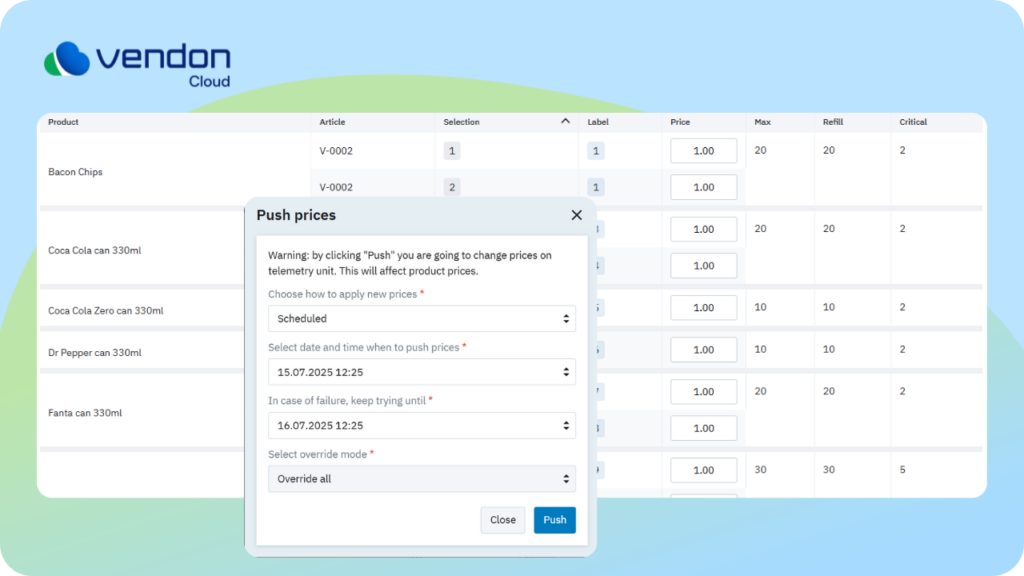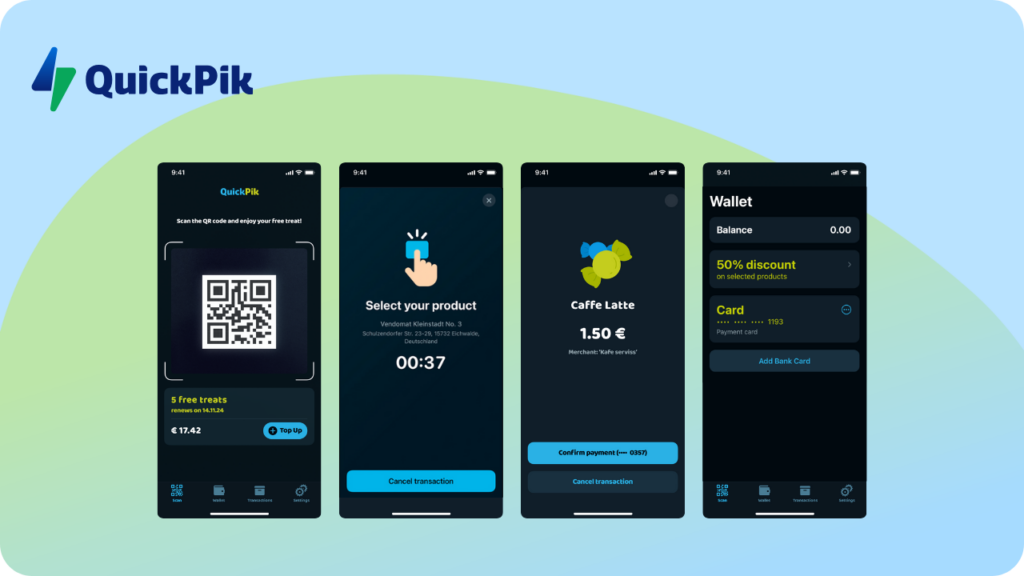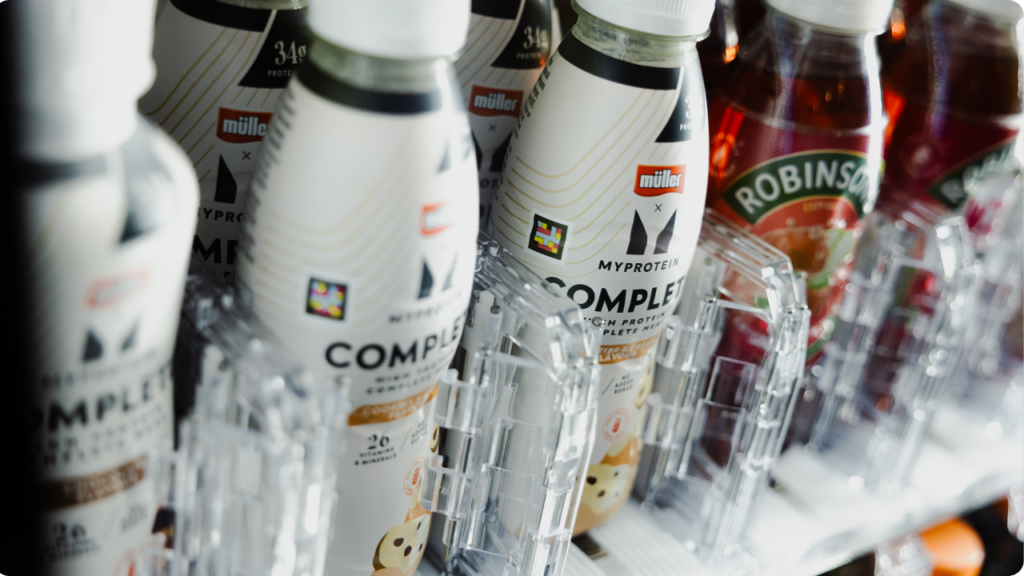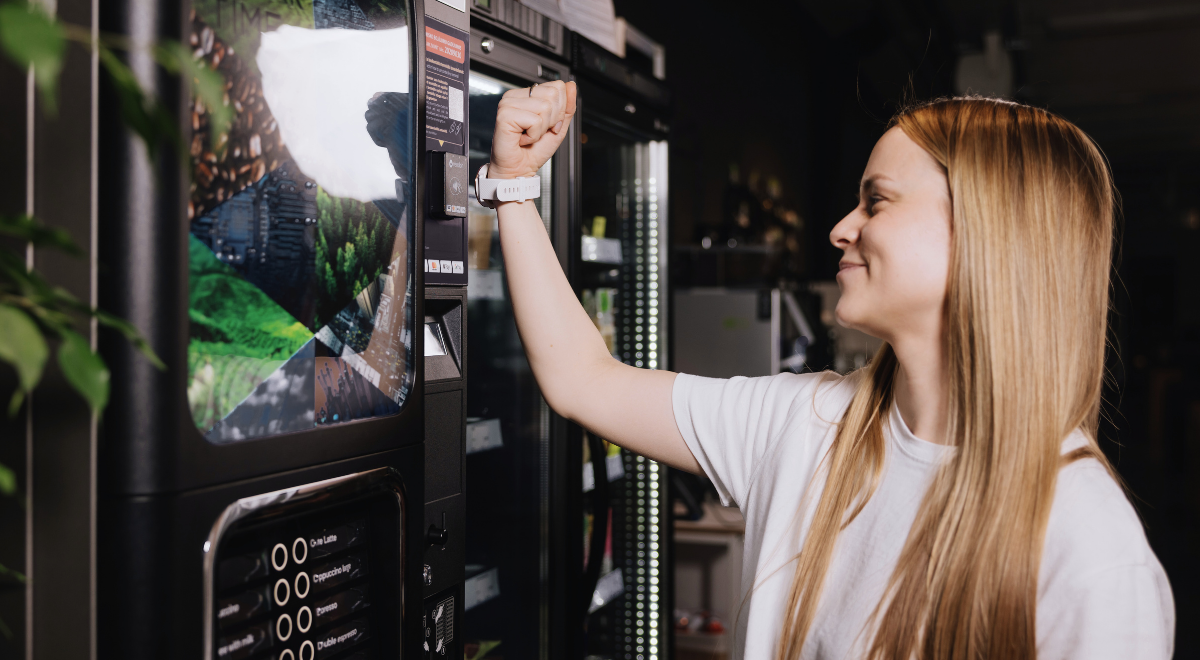Pricing strategy often gets overlooked in day-to-day operations — especially in vending and coffee machine businesses where margins are tight, and efficiency is everything. But operators who treat pricing as a business tool, not just a setting on the machine, are seeing real results.
Dieser Artikel stellt fünf Strategien vor, die echte Betreiber heute anwenden, um Preise aus der Ferne anzupassen, die Rentabilität zu steigern und schneller auf sich ändernde Bedingungen zu reagieren. Alle basieren auf Vendon Cloud und der QuickPik-Treue-App.
1. Geplante Preisänderungen für Spitzenzeiten

An einigen Standorten ist zu bestimmten Zeiten regelmäßig eine höhere Nachfrage zu verzeichnen – beispielsweise an Automaten in Parks an heißen Wochenenden, in Stadtzentren während Festivals oder vor Stadien an Spieltagen. Wenn die Preise während dieser Spitzenzeiten unverändert bleiben, kann dies zu Einnahmeausfällen führen.
Ein Beispiel aus der Praxis:
Ein Betreiber, der eine Flotte in einem belebten Stadtzentrum verwaltet, wusste, dass eine große Parade und ein Musikfestival am Wochenende den Kundenverkehr in der Nähe von 12 seiner Automaten erhöhen würden. Anstatt im Nachhinein zu reagieren, nutzte er Vendon Cloud , um eine 10-prozentige Preiserhöhung für alle Produkte ab Freitagmittag zu planen. Am Montagmorgen stellte er die Preise wieder auf den Normalwert zurück – alles aus der Ferne.
Durch diese geplante Anpassung konnte er an Tagen mit hoher Nachfrage mehr Umsatz erzielen, ohne auch nur einen einzigen Automaten aufsuchen zu müssen.
2. Treuebasierte Preisgestaltung für ausgewählte Nutzer

Nicht alle Kunden sollten den gleichen Preis zahlen. In Büroumgebungen oder geschlossenen Standorten differenzieren Betreiber nun zwischen den Preisen für Mitarbeiter und Besucher – sie belohnen damit die Treue und bieten Firmenkunden einen Mehrwert.
Ein Beispiel aus der Praxis:
Ein Betreiber, der mit einem großen Bürokomplex zusammenarbeitet, wurde gebeten, den Mitarbeitern kostenlosen Kaffee und vergünstigte Snacks anzubieten – während für externe Besucher die Standardpreise gelten sollten. Mit QuickPik erstellte der Betreiber eine Preisgruppe in Vendon Cloud. Die Mitarbeiter scannten einen QR-Code über die App am Automaten. Das System erkannte sie automatisch und wandte den Rabatt oder die Anzahl der kostenlosen Produkte an.
3. Testen der Preisgestaltung an verschiedenen Standorten
Der Erfolg der Preisgestaltung an einem Standort garantiert nicht das gleiche Ergebnis an einem anderen Standort. Intelligente Betreiber führen kontrollierte Preistests an verschiedenen Automatenclustern durch – und nutzen dabei echte Verkaufsdaten, um zu entscheiden, was am besten funktioniert.
Ein Beispiel aus der Praxis:
Ein Betreiber wollte herausfinden, ob Kunden in Büros in der Innenstadt bereit sind, mehr für Premium-Energy-Drinks zu bezahlen als Kunden in Vororten. Er nutzte Vendon Cloud , um zwei Preiszonen zu erstellen – eine mit höheren Preisen, eine mit Standardpreisen – und beobachtete die Verkäufe über mehrere Wochen hinweg.
Das Ergebnis: Der höhere Preis hatte in der Stadt keine negativen Auswirkungen, sondern führte zu zusätzlichen Einnahmen. In Vororten sorgten niedrigere Preise für ein hohes Verkaufsvolumen. Dank dieser Erkenntnisse konnte der Betreiber maßgeschneiderte Preise für die jeweilige Umgebung einführen.
4. Sonderpreise zur Unterstützung von Produkteinführungen

Bei der Einführung eines neuen Produkts – sei es ein Snack, ein saisonales Getränk oder ein Artikel in limitierter Auflage – kann der Preis eine wichtige Rolle dabei spielen, zum Ausprobieren anzuregen und Schwung zu erzeugen.
Ein Beispiel aus der Praxis:
Ein Getränkehersteller bat einen Betreiber, bei der Werbung für ein neues Getränk in Universitäten und Bürogebäuden zu helfen. Der Betreiber senkte den Preis in 30 Automaten für einen zweiwöchigen Einführungszeitraum und verfolgte die Verkäufe mit Vendon Cloud. Diese vorübergehende Preisgestaltung trug nicht nur dazu bei, den Bekanntheitsgrad zu steigern und zum Ausprobieren anzuregen, sondern lieferte dem Anbieter auch Verkaufsdaten, die weitere Investitionen rechtfertigten.
Durch solche vorübergehenden Preisanpassungen können Betreiber ihre Markenpartner unterstützen und gleichzeitig das Verbraucherinteresse steigern – und möglicherweise durch gemeinsame Werbeaktionen mehr Umsatz generieren.
5. Geringfügige Preisanpassungen zum Schutz der Margen
Kosten steigen – oft langsam und unbemerkt. Zutaten, Verpackungen, Kraftstoff und Wartung schmälern die Margen. Kluge Betreiber passen die Preise proaktiv in geringem Umfang für ihre gesamte Flotte an, um vorne zu bleiben – ohne die Kunden zu beunruhigen.
Ein Beispiel aus der Praxis:
Als die Kosten für abgefülltes Wasser um 0,04 € stiegen, reagierte ein Betreiber mit einer Preiserhöhung von 0,05 € für 200 Automaten. Die Kunden bemerkten dies nicht, aber das Unternehmen vermied Margenverluste – und verzeichnete am Monatsende einen Gewinnanstieg.
Diese regelmäßigen, kleinen Anpassungen tragen dazu bei, dass später keine großen, plötzlichen Erhöhungen notwendig sind.
Die Preisgestaltung ist ein Hebel, nicht nur eine Einstellung
Alle fünf Strategien haben ein gemeinsames Ziel: Die Preisgestaltung soll sich stärker für das Unternehmen auszahlen.
Durch die Planung von Preisänderungen, die Anwendung von Treuepreisen, Tests nach Standort, die Unterstützung von Werbeaktionen und die Anpassung an Kostenänderungen gewinnen Betreiber mehr Kontrolle – nicht nur über den Umsatz, sondern auch über Beziehungen, Markenwert und Rentabilität.







